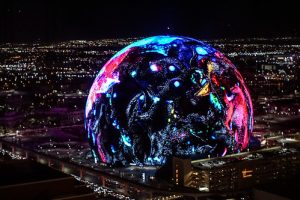A.I. Made These Movies Sharper. Critics Say It Ruined Them.

In 1998, Geoff Burdick, an executive at James Cameron’s Lightstorm Entertainment, was hunched in front of a 12-inch monitor at a postproduction house, carefully preparing “Titanic” for release on LaserDisc and VHS. A state-of-the-art computer process had made it possible for Burdick and his team to scour the film frame by frame, removing tiny imperfections embedded in the original negative: little scratches, flakes of dirt, even water stains that smeared the image. The computer could erase these blemishes using a kind of copy-paste tool, concealing the defects with information from another frame.
Burdick, now a senior vice president at the company, told me that this process “seemed like freaking magic at the time.” And yet the results were not entirely well-received. “There were a lot of people who said that this was the most beautiful VHS they’d ever seen in their life, because we’d gotten rid of all that gobbledygook,” he recalled. “But there were a lot of folks who said, ‘This is not right! You’ve removed all of this stuff! If the negative is scratched, then we should see that scratch.’ People were really hard-core about it.”
In the decades since, home video formats have reached higher and higher resolutions, with VHS and LaserDisc giving way to DVD and Blu-ray, and eventually to ultra high-definition 4K discs, known as Ultra HD Blu-rays. As the picture quality has improved, restoration tools have evolved with them, making it easier than ever for filmmakers to fine-tune their work using computers. Several of Cameron’s films, including “The Abyss,” “True Lies” and “Aliens,” were recently released on Ultra HD Blu-ray in newly restored versions that are clearer and sharper than ever before — the product of painstaking attention from Lightstorm and Cameron himself. “I think they look the best they’ve ever looked,” Burdick said.
But as with the old “Titanic” home video, these restorations have proved controversial, with many viewers objecting strenuously to their pristine new look. What has caught the particular ire of critics is the fact that these versions have been restored, in part, using artificial intelligence. Park Road Post Production, the New Zealand company owned by the filmmaker Peter Jackson, helped clean up Cameron’s films using some of the same proprietary machine-learning software used on Jackson’s documentaries “The Beatles: Get Back” and “They Shall Not Grow Old.” The images in Cameron’s classic blockbusters were refined in a way that many felt looked strange and unnatural.
The level of detail is eye-popping. Water looks crystalline; colors are bright and vivid, while blacks are deep and inky. Some surfaces, however, do look a little glossy, with a buffed sheen that appears almost lacquered. It can be hard to pinpoint what is changed. But there does seem to be a difference, and depending on the viewer, it can feel slightly uncanny.





